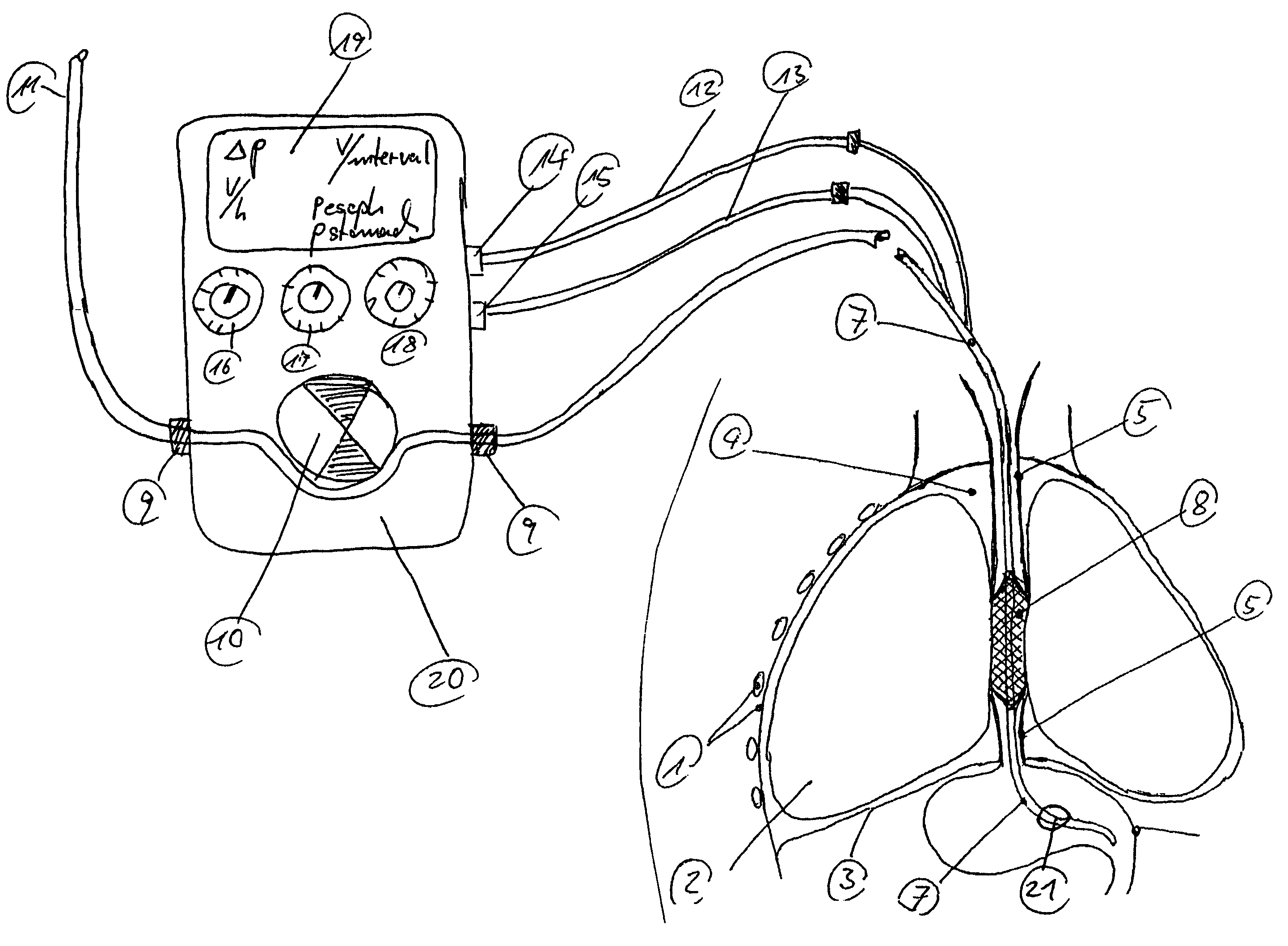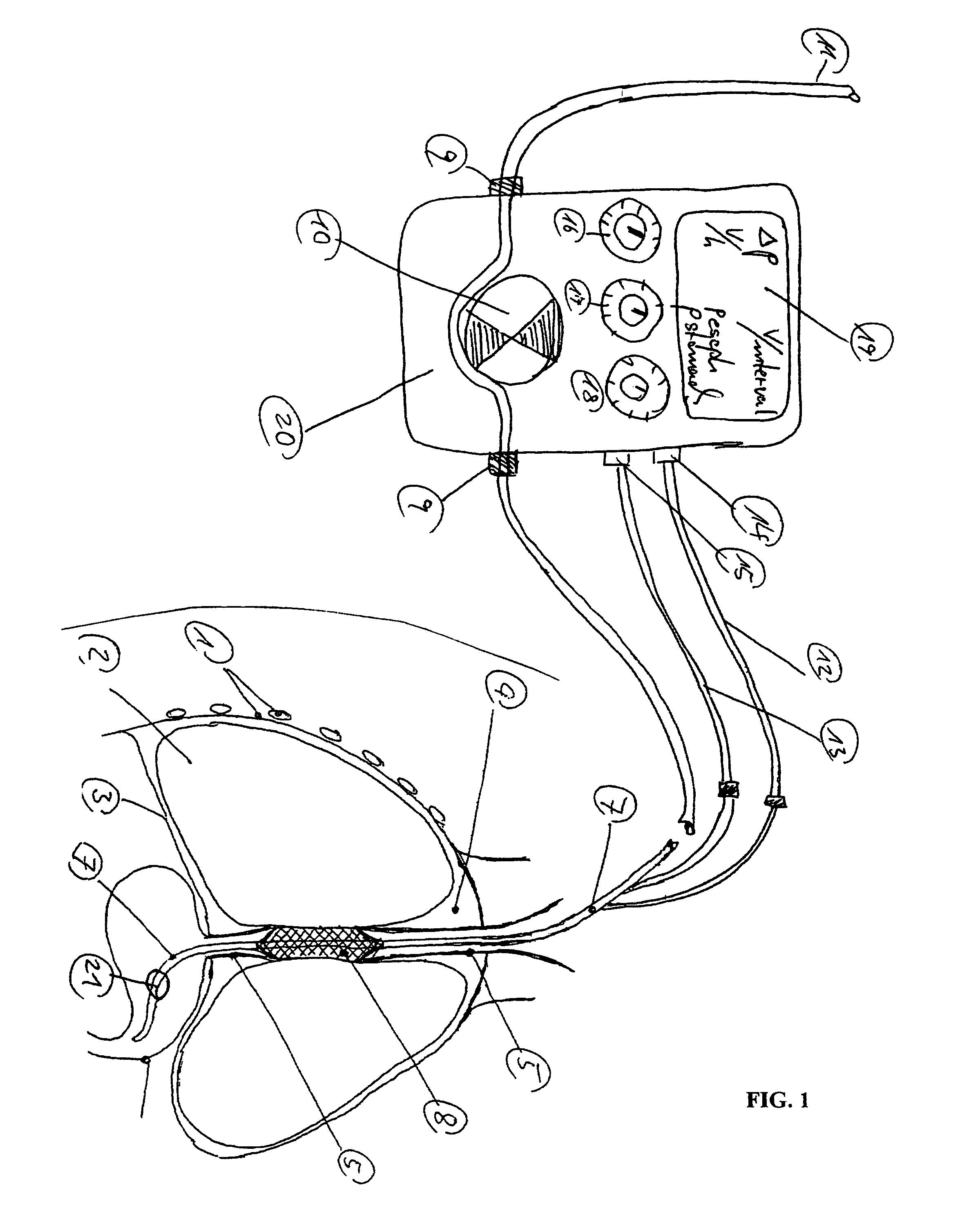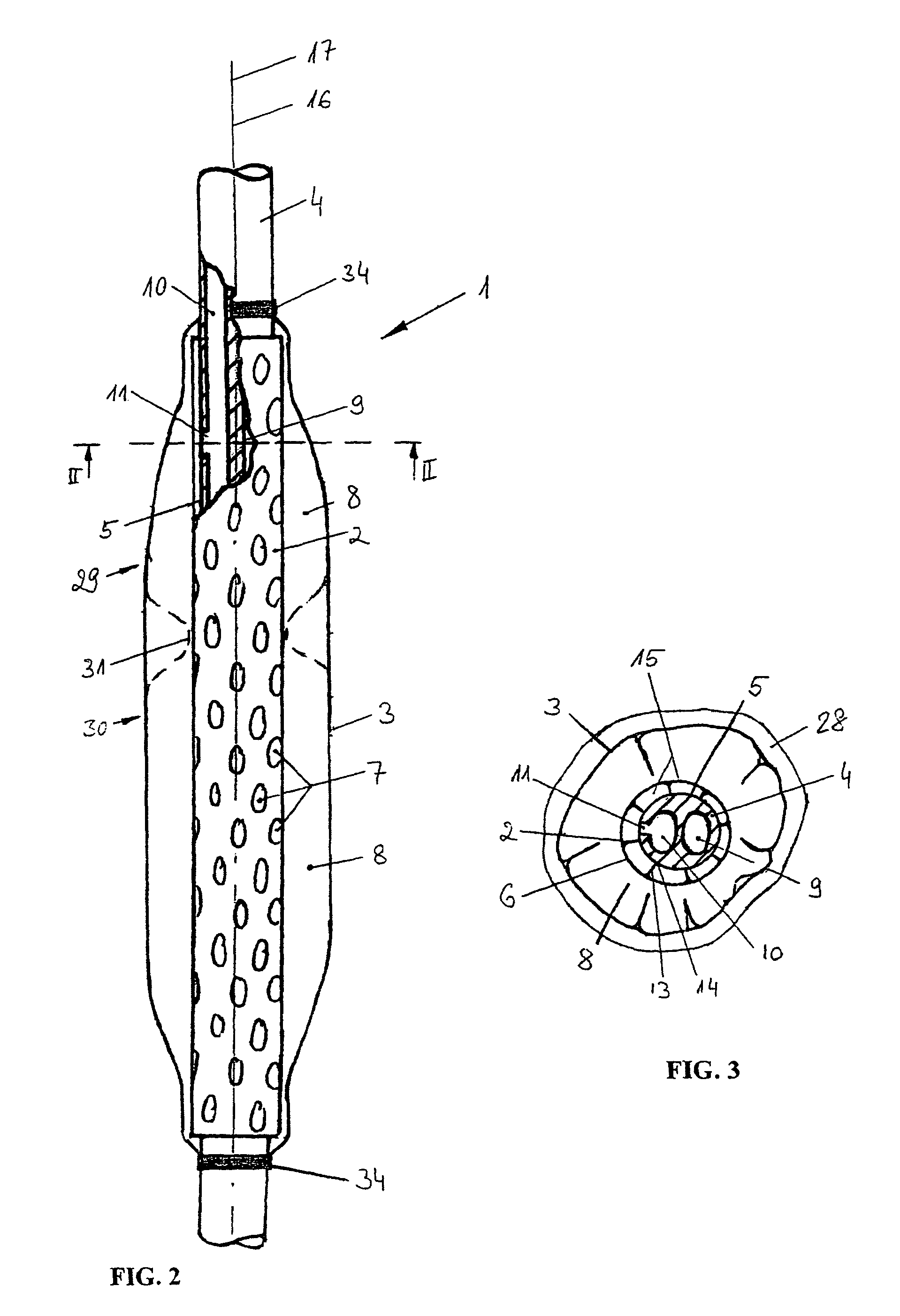Gastro-esophageal reflux control system and pump
a control system and gastroesophageal technology, applied in the field of gastroesophageal reflux control system and pump, can solve the problems of excessive gastric pressure, accumulation of gas or liquid, and the inability of the enteral feeding device to receive reflux fluid backflow, etc., and achieve the effect of rectifying the disadvantages
- Summary
- Abstract
- Description
- Claims
- Application Information
AI Technical Summary
Benefits of technology
Problems solved by technology
Method used
Image
Examples
first embodiment
[0059]FIG. 4 shows an enlarged image of the disclosed shaped body 2 as shown in the invention. The shaped body 2 has a total length of roughly 6 to 9 cm, and has an almost cylindrical external shape. Several wall sections 13 extend radially from the cylindrical surface 6 into the interior of the shaped body 2. The free, front ends 14 of the wall sections 13 define a diameter, which corresponds approximately to the outer diameter of the delivery cannula 4. In the state in which it is used, i.e. when the shaped body 2 is located on the delivery cannula 4, the front ends 14 of the wall sections 13 rest on the delivery cannula 4, as FIG. 3 shows. Together with the delivery cannula 4, the lumen 5 inside the shaped body 2 is divided into separate lumen sections 15. A single lumen section 15 is delimited by two wall sections 13, the section of the surface of the shaped body 6 which lies between the two wall sections 13 and the section of the surface of the delivery cannula which is located...
fifth embodiment
[0068]FIG. 9 shows the disclosed shaped body 2. It is pipe-like or tubular in shape and has a net-like construction 25. The inner diameter of the shaped body 2 corresponds approximately to the outer diameter of the delivery cannula 4. In this case, the lumen 5 is located within the mesh or openings 26 of the net-like construction 25, which are at least partly connected to each other, and thus permit volume exchange between the individual openings 26 of the net-like construction 25.
[0069]In a further embodiment of the invention, the shaped body 2 may also comprise several layers of the net-like construction 25, as FIG. 9a shows. These are arranged roughly concentrically in relation to each other, whereby the inner diameter of the innermost layer corresponds approximately to the outer diameter of the delivery cannula 4. In this case, the lumen 5 is defined by the holes 26 in the net-like construction 25, which overlap at least in parts. This means that the overlapping holes 26 of the ...
fourth embodiment
[0077]With the coil 24, the shaped body 2 shown in FIG. 8, the inner diameter of the shaped body 2 is determined by the inner diameter of the coil 24. The contact surface between the shaped body 2 and the delivery cannula 4 corresponds, in this case, to the spiral installation line or surface of the individual windings 27 of the coil 24. Whether it is in the form of a line or a planar configuration will be determined by the cross section of the coil.
[0078]With the fifth example of the embodiment of the shaped body 2 shown in FIG. 9, the net-like construction 25, the inner diameter of the shaped body 2 and the contact surface between the shaped body 2 and the delivery cannula 4 are determined by the individual connecting pieces 32 of the net-like construction 35.
[0079]The final, assembled stomach probe is used for treating comatose patients, for example, who are unable to feed themselves. In this case, the disclosed stomach probe 1, i.e. the delivery cannula 4 of the stomach probe 1,...
PUM
 Login to View More
Login to View More Abstract
Description
Claims
Application Information
 Login to View More
Login to View More - R&D
- Intellectual Property
- Life Sciences
- Materials
- Tech Scout
- Unparalleled Data Quality
- Higher Quality Content
- 60% Fewer Hallucinations
Browse by: Latest US Patents, China's latest patents, Technical Efficacy Thesaurus, Application Domain, Technology Topic, Popular Technical Reports.
© 2025 PatSnap. All rights reserved.Legal|Privacy policy|Modern Slavery Act Transparency Statement|Sitemap|About US| Contact US: help@patsnap.com



